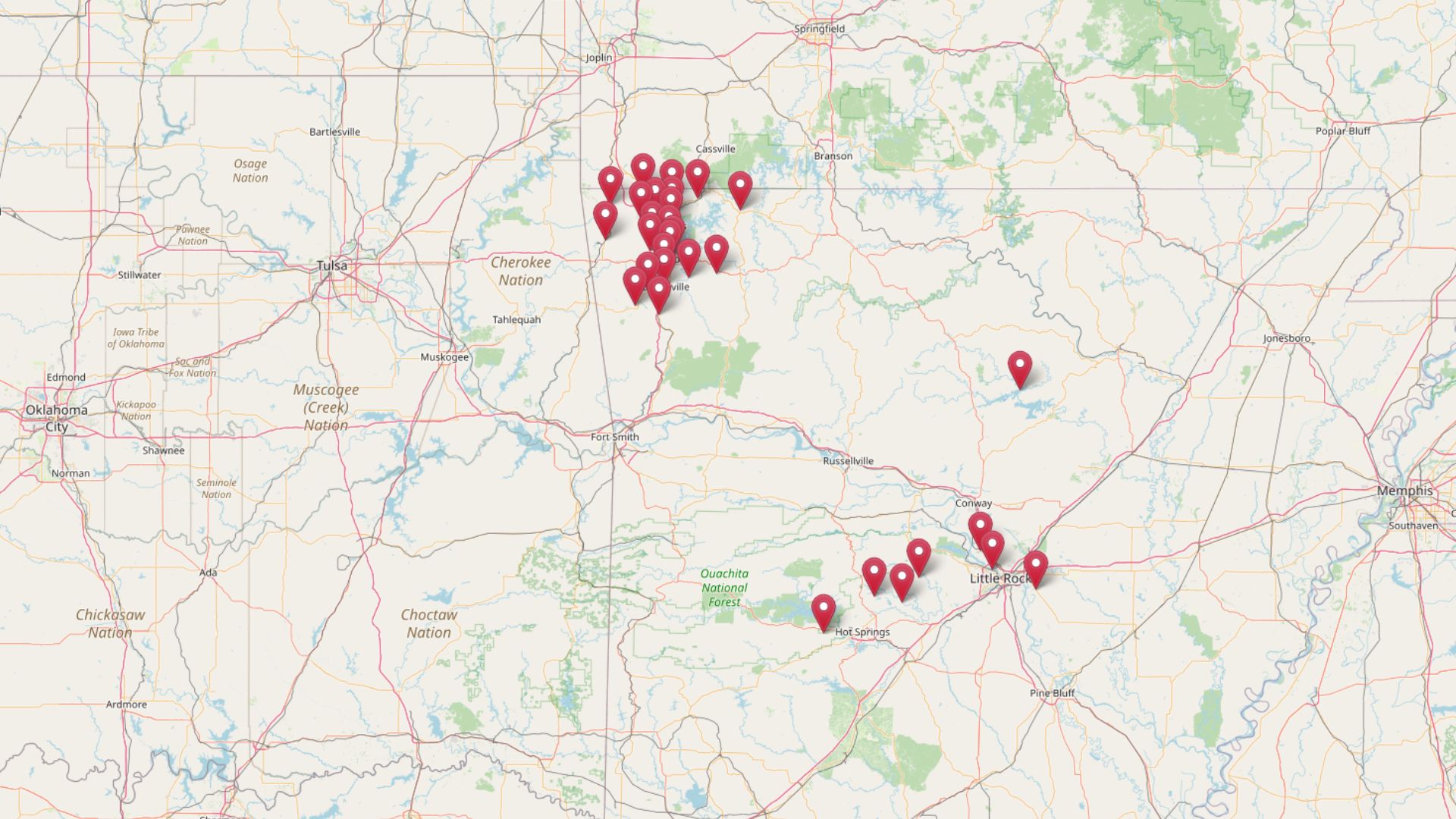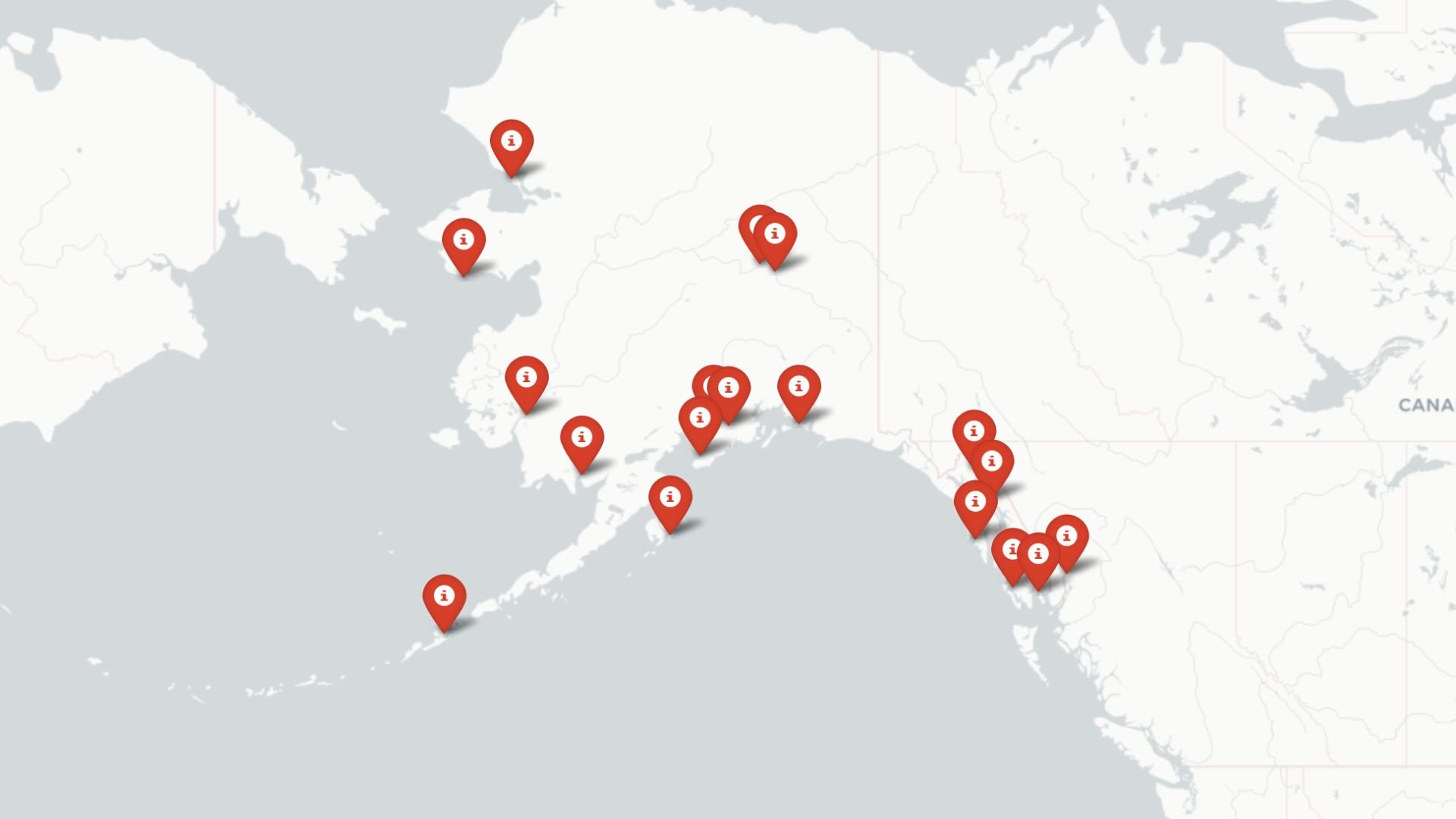
Alaska has always attracted the adventurous, but that doesn’t mean it’s an easy place to buy your first home. In fact, the latest data shows that many of the state’s most well-known towns fall flat when it comes to first-time buyer support. Using the First Time Buyer Score (FTBS), we identified the least friendly places for newcomers trying to put down roots.
Low walkability, poor transit options, and limited infrastructure can make life difficult if you’re just getting started. Whether it’s high costs, isolation, or access issues, these 18 towns all scored a 0.00 FTBS—and for good reason. Here’s what makes them tough for first-timers, and why they may be better suited to seasoned Alaskans than hopeful homebuyers.
18. Ketchikan – No First-Timer Support in This Island Hub

Diego Delso, CC BY-SA 4.0, via Wikimedia Commons
Ketchikan is one of the most recognizable towns in Southeast Alaska, known for its cruise port, colorful boardwalks, and Native heritage sites. But beyond the summer buzz, this island town has a high cost of living and limited space for new growth. Everything from groceries to building supplies has to be shipped in, which drives up prices and makes life expensive even for long-time residents.
With few options for walkable living and nearly no transit system to rely on, Ketchikan can be hard to navigate without a car—and without local knowledge. For first-time buyers looking for convenience, support, or affordability, this remote outpost is more of a challenge than a fresh start.
Ketchikan – FTBS 0.00

- Overall First Time Buyer Friendliness Score: 0.00
- Family Friendliness: 53.35
- Walkability: 28.24
- Transit-Friendliness: 26.13
- Vibrancy: 32.24
- Car-Friendliness: 62.38
- Urbanity: 54.59
While Ketchikan may offer some charm and basic amenities, it’s simply not built for first-time buyers. The lack of accessible housing and minimal infrastructure for newcomers—reflected in its 0.00 FTBS—make it a tough sell unless you already have connections or serious resources.
17. Sitka – Isolated Beauty Without Basic Buyer Help

Sitka blends Alaskan wildness with Russian colonial history, perched on Baranof Island with incredible views and rich culture. But that doesn’t translate to livability for first-time buyers. Limited roads, no direct connection to the mainland, and scarce public transit leave residents reliant on planes, boats, and their own vehicles.
There’s no shortage of natural beauty here, but infrastructure is thin and property prices are steep. Sitka may work for remote workers or retirees with means, but for someone trying to buy their first home on a budget, it offers very little practical support.
Sitka – FTBS 0.00
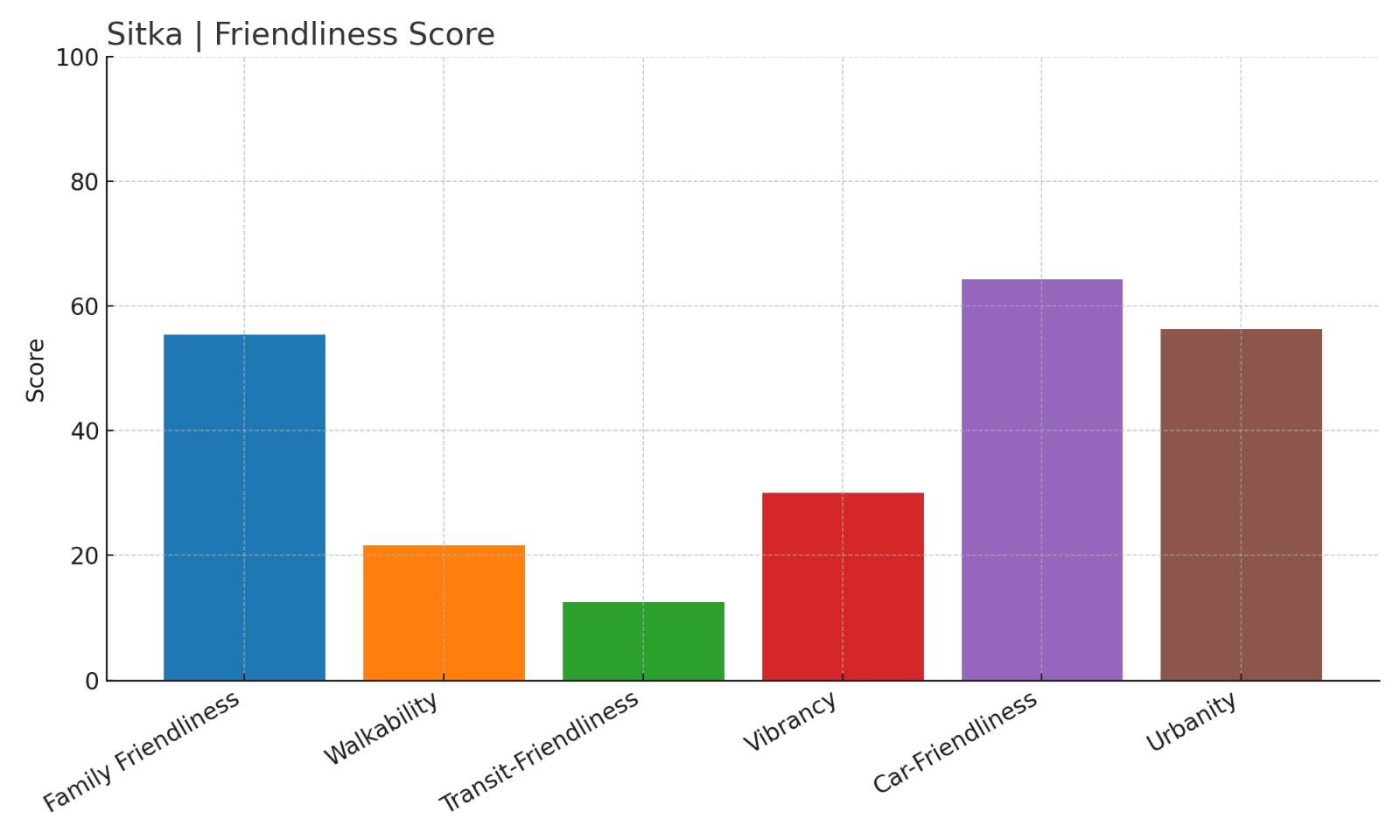
- Overall First Time Buyer Friendliness Score: 0.00
- Family Friendliness: 55.27
- Walkability: 21.51
- Transit-Friendliness: 12.41
- Vibrancy: 29.96
- Car-Friendliness: 64.12
- Urbanity: 56.24
Sitka’s FTBS score of 0.00 reflects how hard it is to get started here without deep pockets or strong local ties. From poor transit access to limited walkability, the data backs up what many already know: this is not an easy launchpad for homeownership.
16. Juneau – Alaska’s Capital, But Not First-Buyer Friendly

Juneau might seem like a solid choice on paper—it’s the state capital, after all—but first-time buyers face an uphill climb. This isolated city is only reachable by boat or plane. Housing stock is limited, land is scarce, and prices remain high, especially in desirable neighborhoods close to downtown.
The job market is steady thanks to government employment, but everyday expenses and transportation limitations make things tricky for new homeowners. Without a car, many areas are hard to access, and walkable neighborhoods are few and far between.
Juneau – FTBS 0.00

- Overall First Time Buyer Friendliness Score: 0.00
- Family Friendliness: 35.82
- Walkability: 17.88
- Transit-Friendliness: 26.44
- Vibrancy: 29.84
- Car-Friendliness: 65.93
- Urbanity: 60.38
Juneau’s zero FTBS score highlights how tough it can be for newcomers to settle here. Between the transportation hurdles and lack of walkable infrastructure, it’s clear the city isn’t geared toward first-time buyers looking for convenience or affordability.
15. Homer – Gorgeous But Logistically Tough

Homer is a beloved fishing town at the end of the Sterling Highway, known for its artistic flair and iconic spit. It offers stunning natural surroundings, but the realities of daily life aren’t so picturesque for someone starting out. With no public transit and extremely low walkability, almost everything requires a vehicle and planning ahead.
Housing is often more tailored to seasonal or second-home buyers, and full-time rental options are limited. While families might appreciate its school system and strong community spirit, Homer doesn’t have the infrastructure or accessibility that first-timers typically need.
Homer – FTBS 0.00

- Overall First Time Buyer Friendliness Score: 0.00
- Family Friendliness: 71.37
- Walkability: 6.19
- Transit-Friendliness: 0.00
- Vibrancy: 15.66
- Car-Friendliness: 67.44
- Urbanity: 53.36
Even though Homer scores high on family friendliness, its zero FTBS reveals the lack of practical support for new buyers. It’s a better match for those seeking lifestyle over convenience, not someone buying their first home without a fallback plan.
14. Cooper Landing – Hope – Too Remote for a Fresh Start

Cooper Landing and Hope are quiet enclaves tucked along the Kenai Peninsula, popular with fishermen, outdoor adventurers, and those seeking off-grid living. These areas are stunning but remote, with minimal services and long distances to anything resembling a town center.
The communities are deeply rural, with limited job opportunities and almost no infrastructure to support people trying to settle in. Groceries, healthcare, schools—everything requires a drive, and the road conditions can be tricky during Alaska’s harsher months.
Cooper Landing – Hope – FTBS 0.00
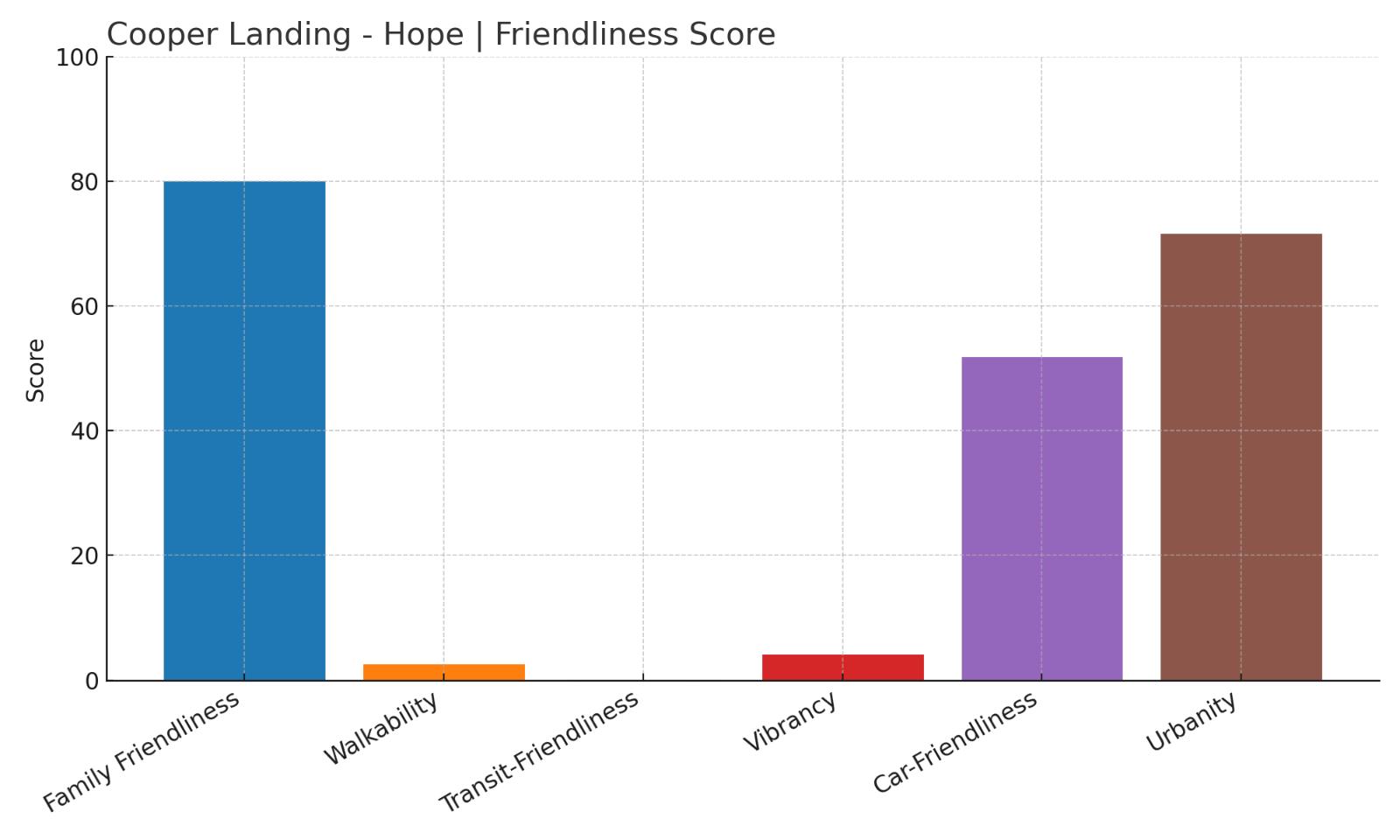
- Overall First Time Buyer Friendliness Score: 0.00
- Family Friendliness: 79.92
- Walkability: 2.39
- Transit-Friendliness: 0.00
- Vibrancy: 4.00
- Car-Friendliness: 51.66
- Urbanity: 71.45
Despite solid family-friendliness and urbanity scores, the FTBS of 0.00 shows how hard it is for first-timers to get a foothold here. Without services, transport, or infrastructure, these communities cater more to experienced rural dwellers than anyone buying a first home.
13. Sterling – Rural Living With Few Buyer Perks

Sterling is a small, unincorporated community on the Kenai Peninsula, known for its fishing spots and quiet, rural feel. It’s a peaceful place with large plots and lots of privacy—but that doesn’t mean it’s easy to live in, especially for a first-time buyer. Services are minimal, and everything from groceries to healthcare requires a trip to nearby Soldotna or Kenai.
There’s little in the way of public infrastructure, and the housing market is heavily weighted toward single-family homes on large lots—often with steep price tags. Sterling might suit retirees or families looking for seclusion, but for young buyers just starting out, the barriers are high.
Sterling – FTBS 0.00

- Overall First Time Buyer Friendliness Score: 0.00
- Family Friendliness: 68.87
- Walkability: 0.51
- Transit-Friendliness: 11.52
- Vibrancy: 2.77
- Car-Friendliness: 64.67
- Urbanity: 42.41
Sterling’s FTBS score of 0.00 is no surprise. With next to no walkability or vibrancy and few services close by, it’s a challenging place to begin your journey into homeownership—unless you’re already prepared for a rural lifestyle.
12. Cordova – Coastal, Remote, and Hard to Settle In

Cordova is nestled on Prince William Sound and surrounded by breathtaking wilderness. It’s a town that thrives on fishing, tourism, and seasonal industry—but permanent residents face real challenges. You can’t drive into Cordova; it’s only accessible by boat or plane, which limits freedom and increases the cost of living.
There’s a strong sense of community, but very little in the way of housing support, walkable infrastructure, or transit services. While the natural setting is undeniably beautiful, daily life here can be isolating and expensive, particularly for newcomers.
Cordova – FTBS 0.00
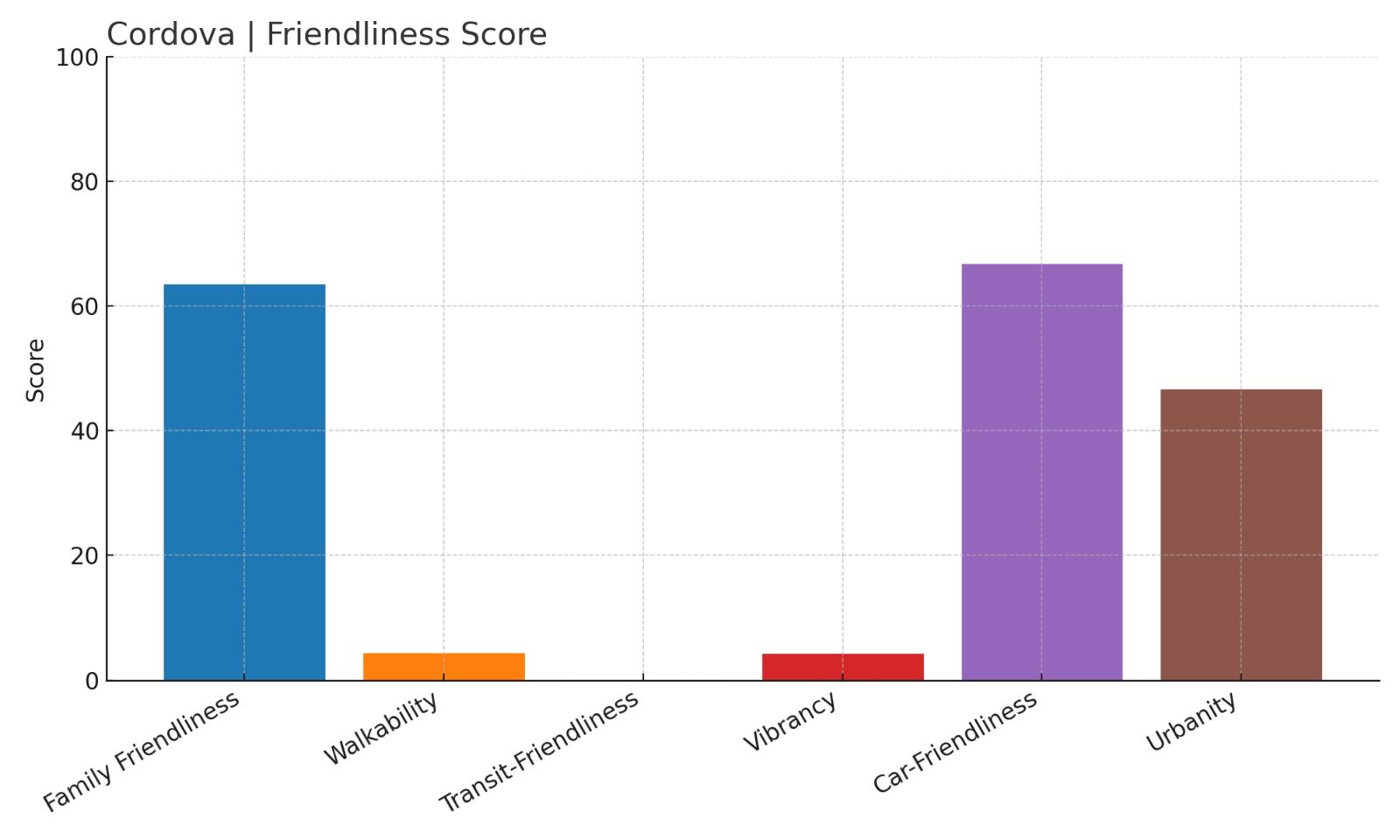
- Overall First Time Buyer Friendliness Score: 0.00
- Family Friendliness: 63.35
- Walkability: 4.21
- Transit-Friendliness: 0.00
- Vibrancy: 4.10
- Car-Friendliness: 66.67
- Urbanity: 46.58
Cordova’s zero FTBS score highlights the core problem: it’s remote, it’s expensive, and it lacks the support systems that first-time buyers typically rely on. Unless you have existing ties or a very flexible lifestyle, it’s not an easy starting point.
11. Haines – Great for Families, But Not for First Homes

Haines sits along the Lynn Canal and offers majestic mountain views, strong community traditions, and good schools. It’s a quiet place that many families enjoy—but the remote location and lack of infrastructure make it difficult for new buyers trying to break into the market. Like other Southeast Alaska towns, it’s not connected to the road system beyond one long, winding route that leads to Canada.
Transit doesn’t really exist here, and walkability is poor outside the small downtown strip. While established families might love the pace of life, the lack of accessible services, limited rental options, and narrow job opportunities make it a tough choice for first-time homebuyers.
Haines – FTBS 0.00
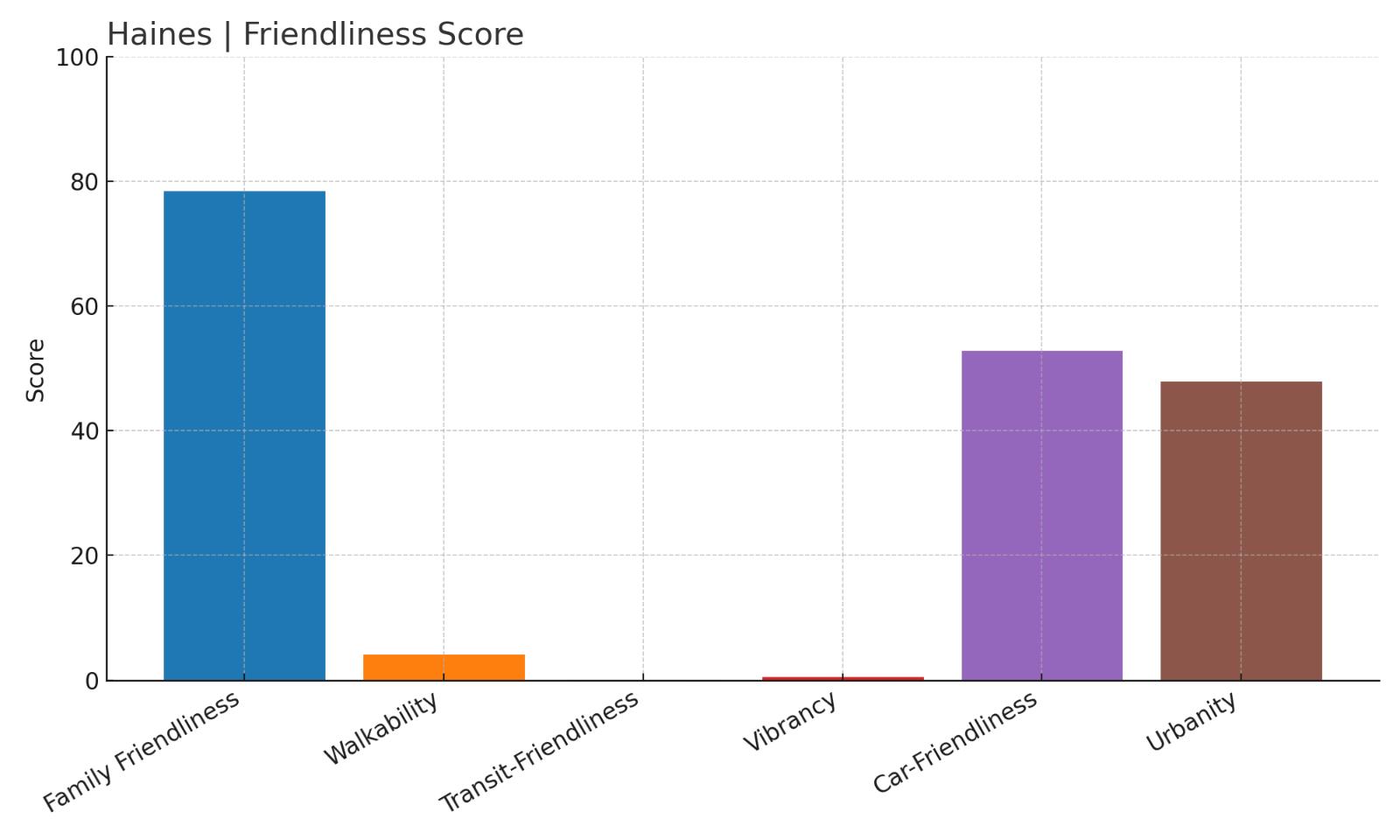
- Overall First Time Buyer Friendliness Score: 0.00
- Family Friendliness: 78.30
- Walkability: 4.05
- Transit-Friendliness: 0.00
- Vibrancy: 0.42
- Car-Friendliness: 52.72
- Urbanity: 47.78
Haines ranks well for families but its FTBS score tells a different story for first-time buyers. The isolation and lack of infrastructure make it hard to thrive here without prior experience or support.
10. Old Harbor – A Village With Nearly No Infrastructure
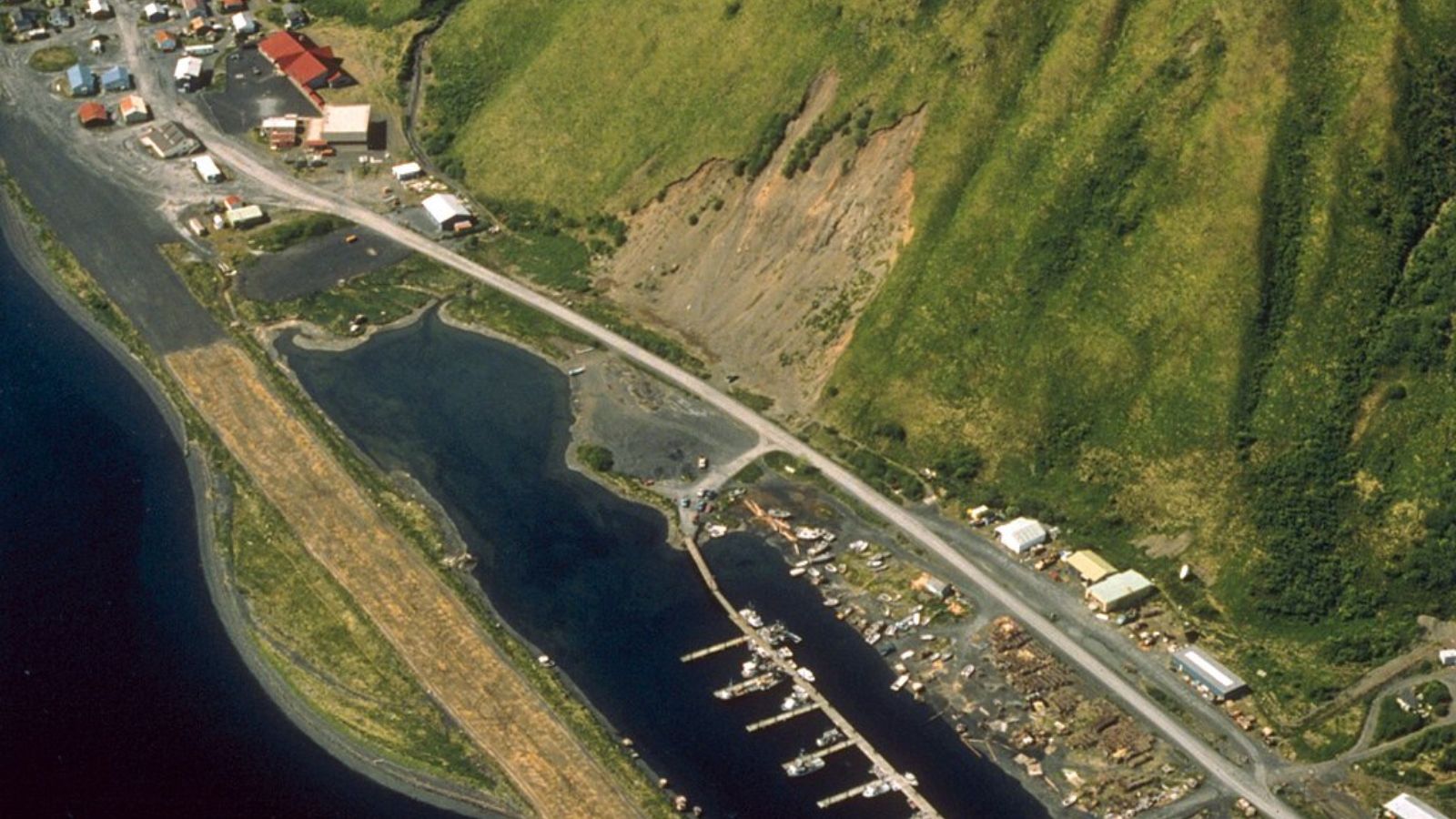
Old Harbor is a small Alutiiq village on Kodiak Island, home to fewer than 250 people. It’s deeply connected to cultural traditions and subsistence living, but it’s one of the most remote places in the state. There are no roads connecting it to other towns, and the local economy is limited to fishing, tourism, and public service jobs.
Housing is minimal and largely passed down within families. Services like healthcare and schooling are basic at best, and everything else has to come in by boat or small plane. For someone hoping to buy their first home, the lack of access and opportunities is a deal-breaker.
Old Harbor – FTBS 0.00
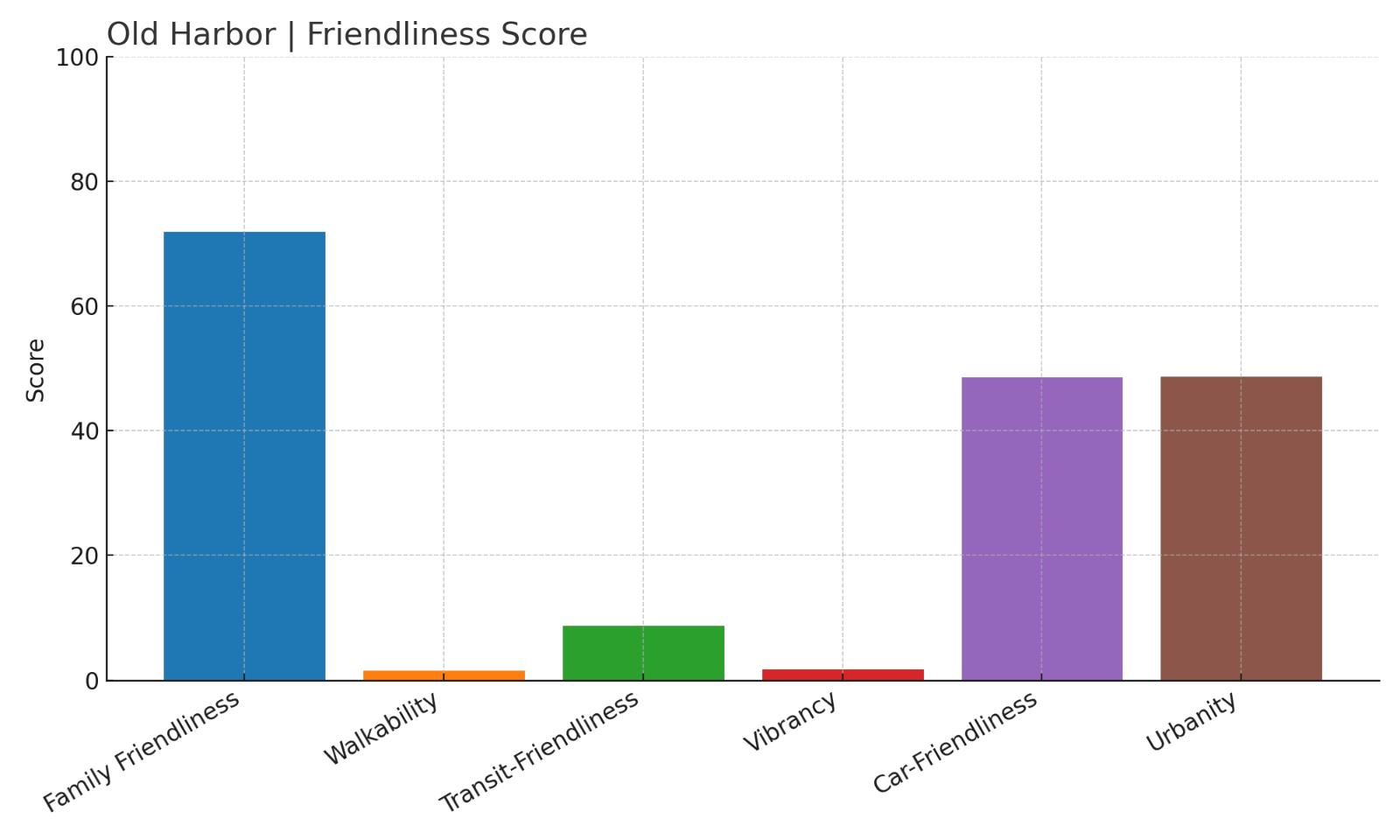
- Overall First Time Buyer Friendliness Score: 0.00
- Family Friendliness: 71.83
- Walkability: 1.39
- Transit-Friendliness: 8.62
- Vibrancy: 1.61
- Car-Friendliness: 48.43
- Urbanity: 48.53
Old Harbor’s FTBS score reflects how inaccessible it is for first-time buyers. While it may offer cultural richness and community bonds, the lack of basic infrastructure makes homeownership here nearly impossible for outsiders.
9. Nome – Frontier Spirit, But Hard to Get Started

Nome is famous for its Gold Rush history and as the finish line of the Iditarod, but today it’s a small hub on the western coast facing the Bering Sea. It has more infrastructure than some Alaskan towns, including a hospital, schools, and a small airport—but no roads connect it to the rest of the state. Winters are brutal, and the cost of goods remains high due to shipping challenges.
Nome offers a strong sense of community, but housing options are tight and utilities can be unreliable. For first-time buyers, that means risk—and a need for deep pockets or deep patience. It’s a place that suits hardy, experienced residents far more than those just getting started.
Nome – FTBS 0.00
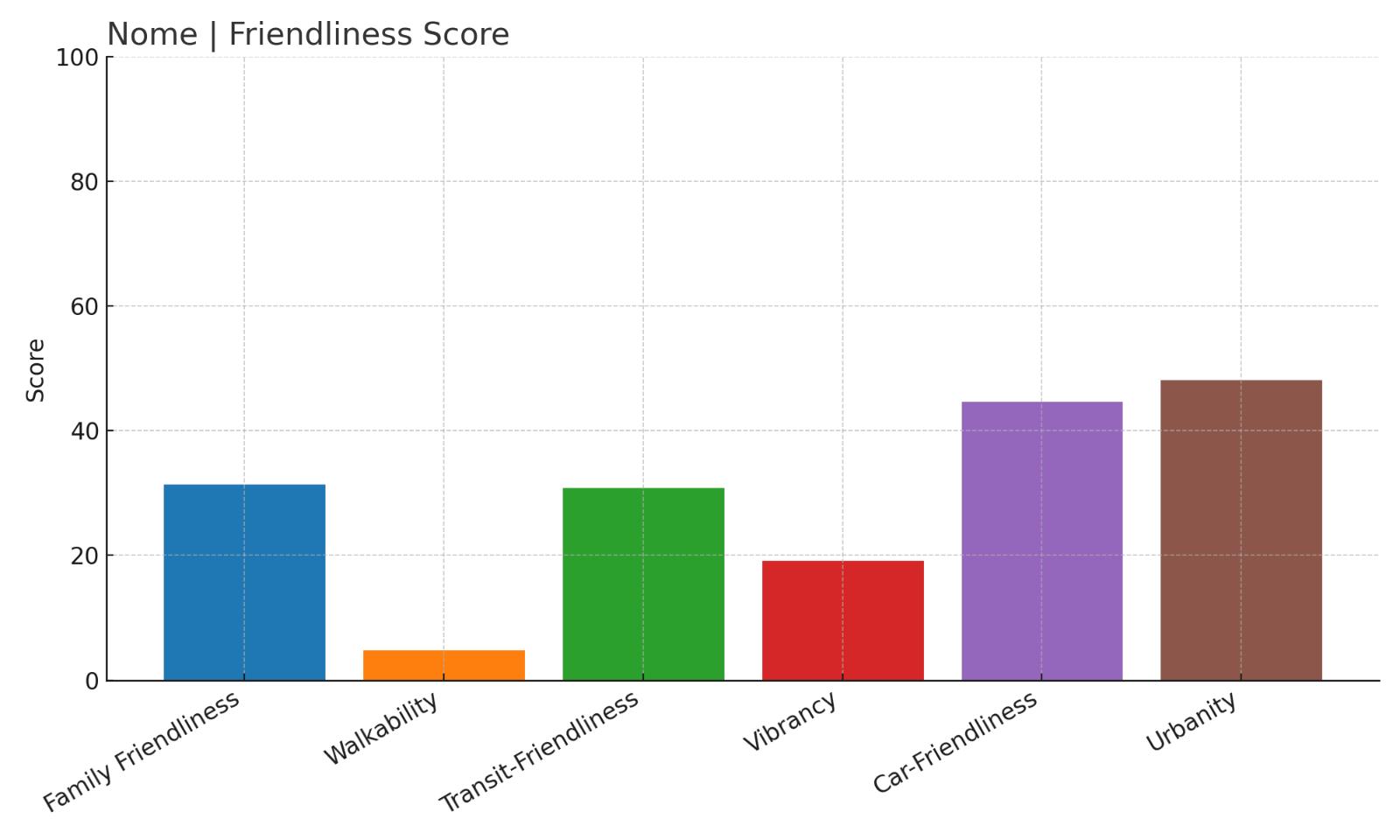
- Overall First Time Buyer Friendliness Score: 0.00
- Family Friendliness: 31.24
- Walkability: 4.71
- Transit-Friendliness: 30.67
- Vibrancy: 19.00
- Car-Friendliness: 44.52
- Urbanity: 48.03
Nome may be better connected than some towns on this list, but its FTBS score of 0.00 reflects the steep learning curve and lifestyle adjustments needed to make it work. For most first-time buyers, there are easier places to begin.
8. Ester – Quirky and Quiet, But Unwelcoming to New Buyers
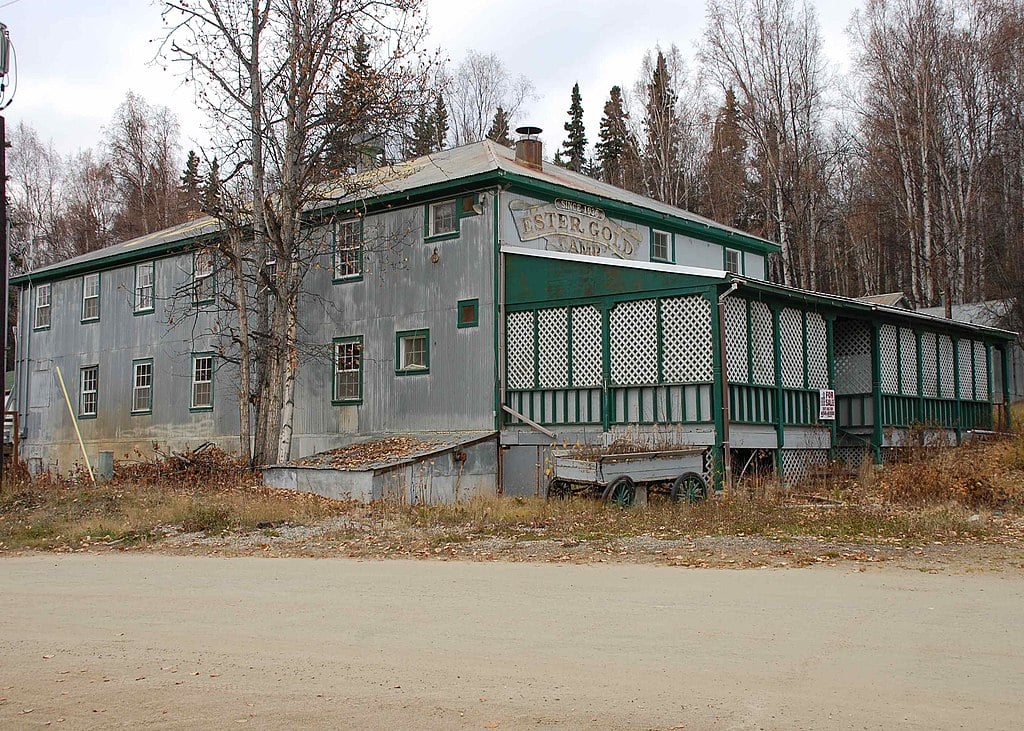
Ester, located just west of Fairbanks, is known for its eccentric art scene, small population, and historic gold mining roots. It’s a favorite among local artists and off-grid enthusiasts, but for first-time buyers, it presents more barriers than benefits. The town lacks basic infrastructure, with almost no walkable amenities and no public transit.
Living in Ester requires a high level of self-sufficiency, from maintaining your own water and waste systems to dealing with long, snowy winters. It’s a place for people who already know what they’re getting into—not those looking for an easy first step into homeownership.
Ester – FTBS 0.00
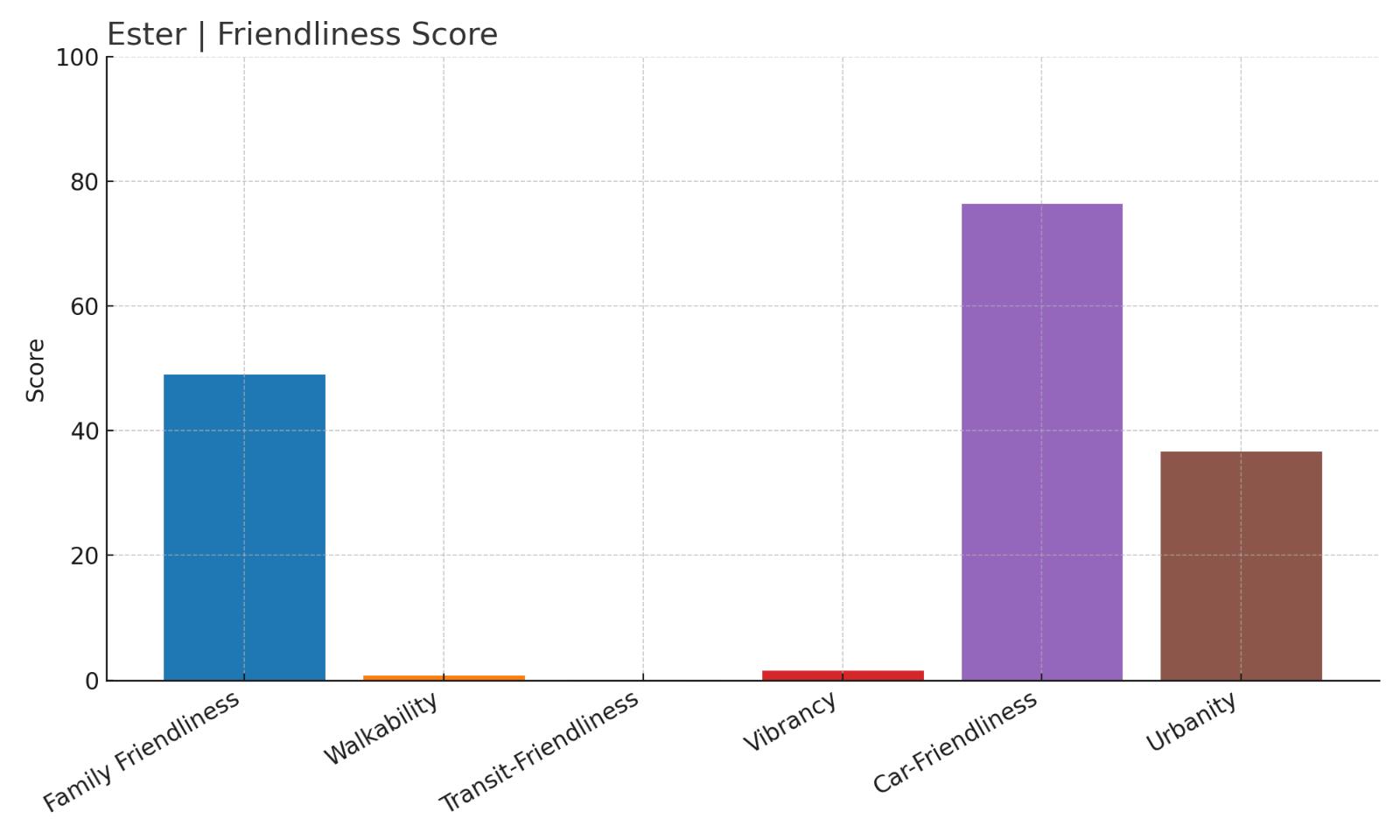
- Overall First Time Buyer Friendliness Score: 0.00
- Family Friendliness: 48.90
- Walkability: 0.61
- Transit-Friendliness: 0.00
- Vibrancy: 1.38
- Car-Friendliness: 76.29
- Urbanity: 36.53
Ester’s low FTBS reflects its deep rural character and lack of buyer-friendly infrastructure. While it appeals to a niche crowd, it offers little in the way of support or accessibility for first-time homeowners.
7. Kotzebue – Regional Hub With Big Challenges
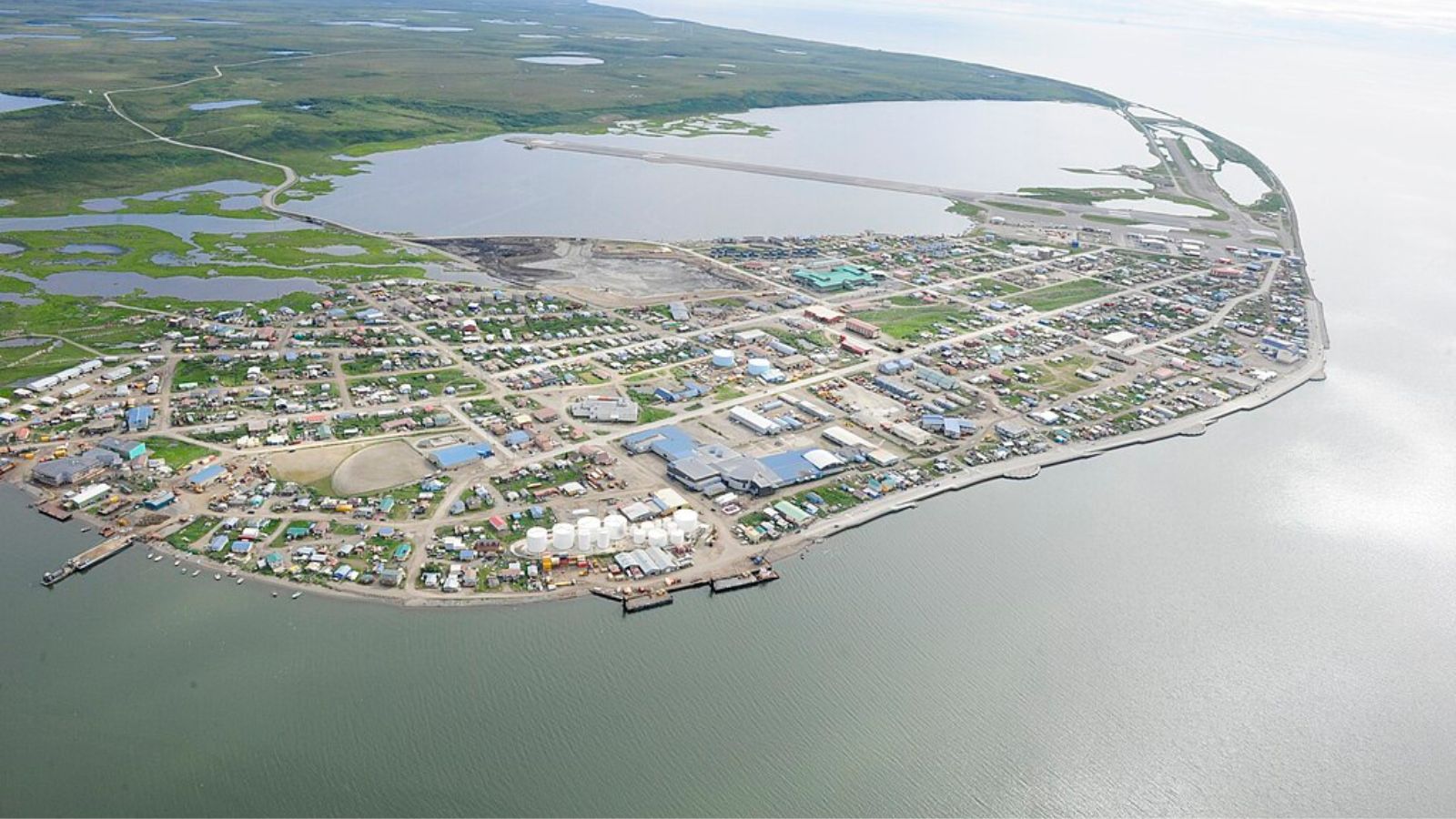
Kotzebue serves as a regional center for Northwest Alaska, sitting above the Arctic Circle on the edge of the Chukchi Sea. While it has a hospital, schools, and government offices, it’s still extremely remote—with no road access and some of the highest costs of living in the state. Weather delays are common, and basic items can take weeks to arrive.
The town has a tight-knit community and strong Indigenous culture, but new arrivals often struggle with limited housing stock and infrastructure issues. For those without existing ties, settling here is far from straightforward.
Kotzebue – FTBS 0.00
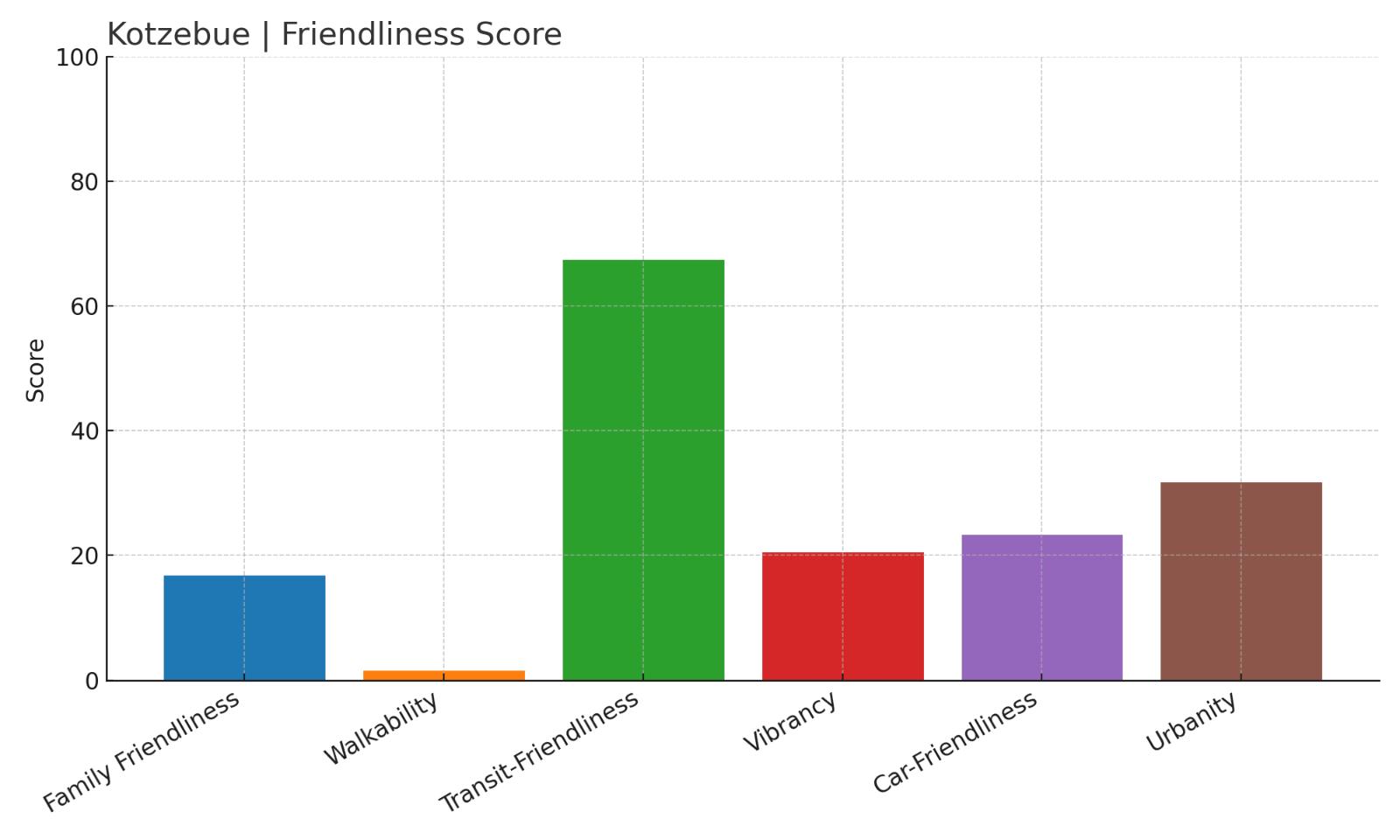
- Overall First Time Buyer Friendliness Score: 0.00
- Family Friendliness: 16.66
- Walkability: 1.41
- Transit-Friendliness: 67.35
- Vibrancy: 20.38
- Car-Friendliness: 23.15
- Urbanity: 31.56
Kotzebue’s FTBS score of 0.00 isn’t just about isolation—it’s about the difficulty of starting out in a place where even the basics are a challenge. Unless you have a job lined up and community support, this is a tough spot to call home for the first time.
6. Dillingham – Fishing Economy, Few Entry Points
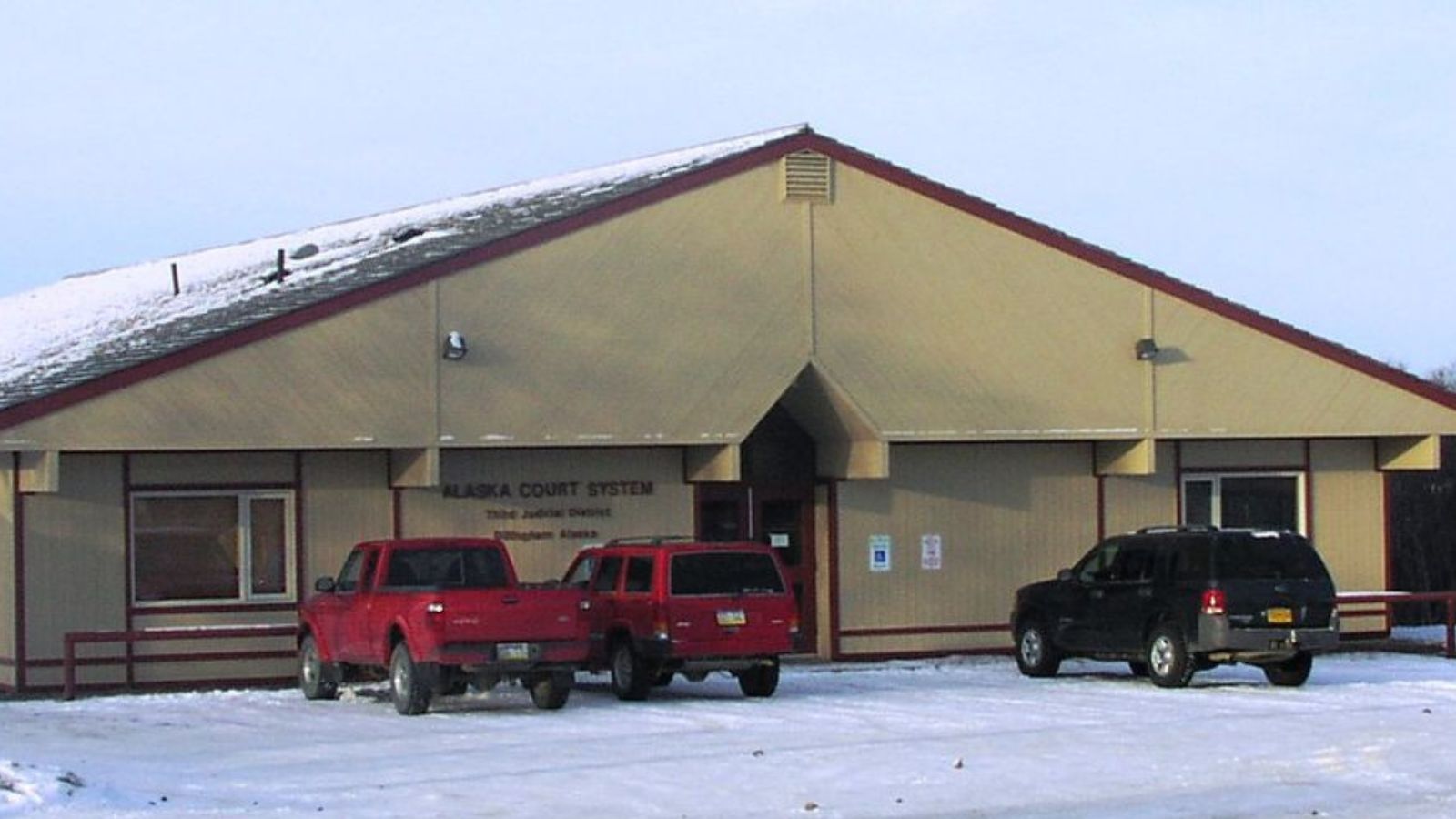
Dillingham sits on Bristol Bay and plays a big role in Alaska’s commercial fishing industry. It’s more developed than many remote towns, with schools, stores, and a regional airport—but even so, it’s disconnected from the road system and faces steep logistical challenges. High shipping costs and limited rental availability add to the barriers.
While the town has services, it lacks diversity in housing and amenities. For a first-time buyer, that means fewer choices and higher risk. Most homes are single-family units with significant upkeep needs, and walkable neighborhoods are rare.
Dillingham – FTBS 0.00
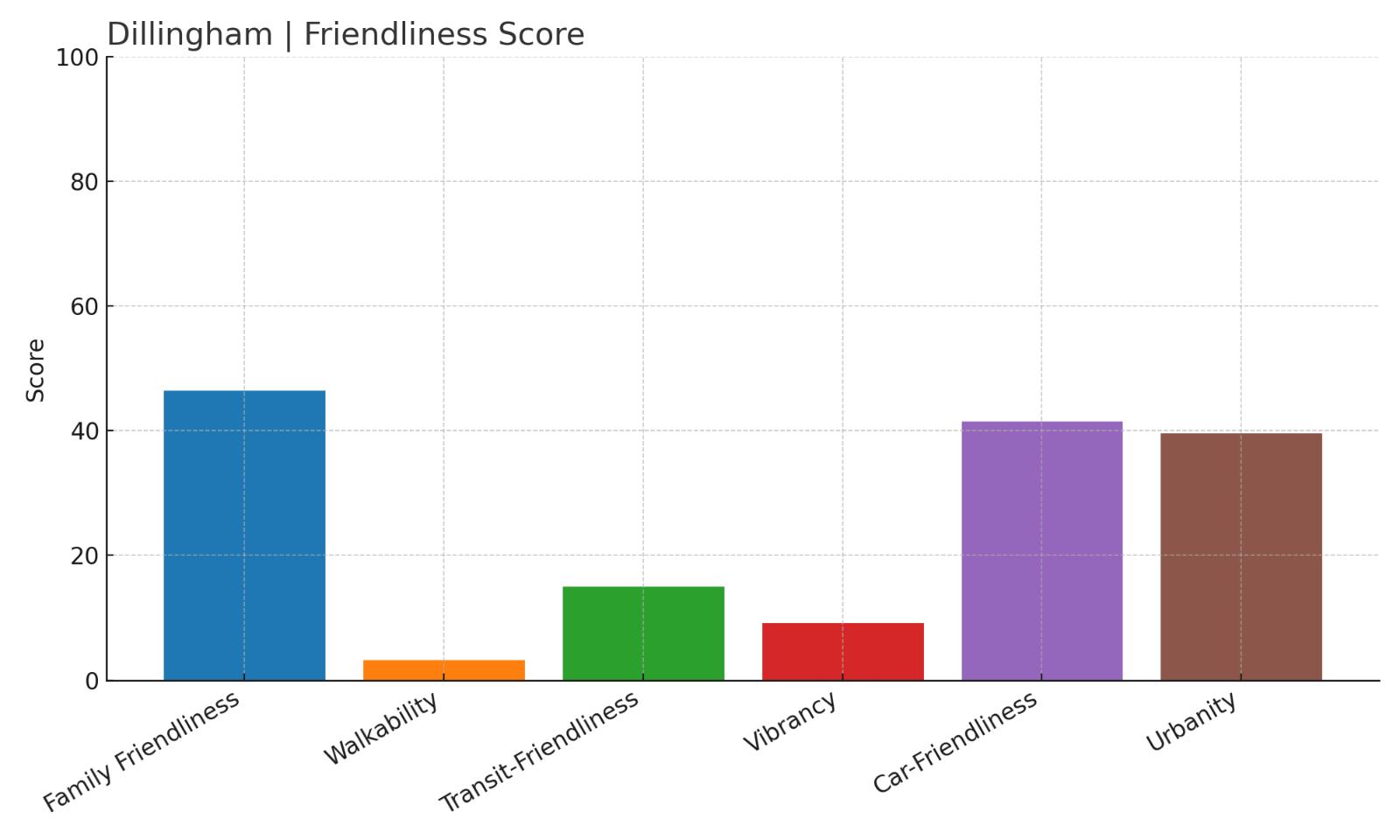
- Overall First Time Buyer Friendliness Score: 0.00
- Family Friendliness: 46.28
- Walkability: 3.10
- Transit-Friendliness: 14.93
- Vibrancy: 9.05
- Car-Friendliness: 41.40
- Urbanity: 39.42
With a 0.00 FTBS, Dillingham shows how hard it is to get started in a single-industry town with major access constraints. While long-term residents make it work, newcomers face a steep climb.
5. Craig – Klawock – Twin Towns With Few First-Buyer Advantages
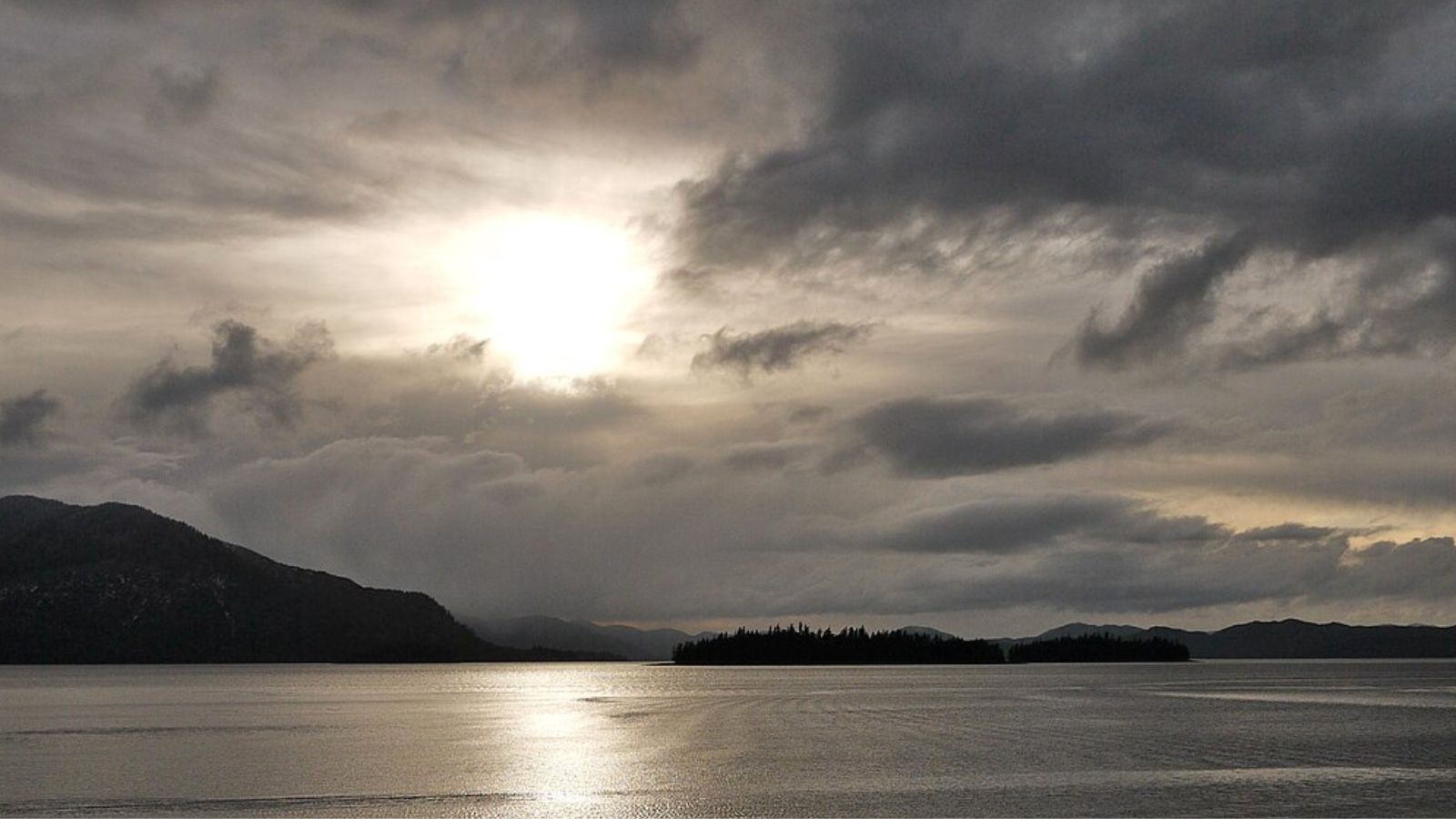
Joseph from Cabin On The Road, USA, CC BY-SA 2.0, via Wikimedia Commons
Craig and Klawock are two small towns on Prince of Wales Island, connected by a short drive and a shared reliance on fishing and logging. They offer beautiful coastal views and a quiet lifestyle, but the infrastructure is thin. Reaching these towns requires a ferry or flight, and local services are minimal.
The housing market is limited and leans heavily toward older homes or seasonal properties. There are few walkable areas, and jobs outside of public service or fishing are hard to find. First-time buyers looking for options will likely feel boxed in.
Craig – Klawock – FTBS 0.00
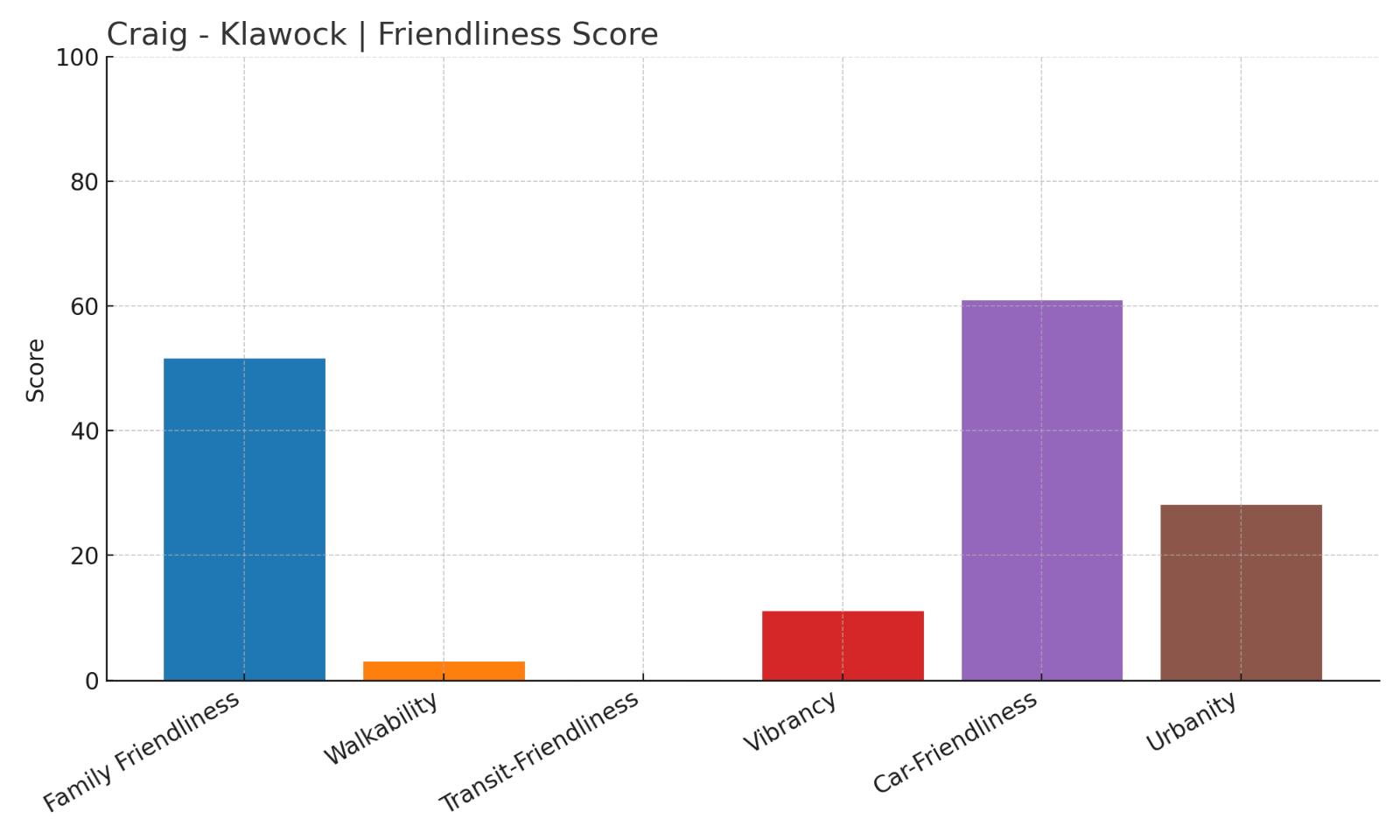
- Overall First Time Buyer Friendliness Score: 0.00
- Family Friendliness: 51.47
- Walkability: 2.84
- Transit-Friendliness: 0.00
- Vibrancy: 10.91
- Car-Friendliness: 60.84
- Urbanity: 28.04
Craig and Klawock may have community spirit, but with a FTBS of 0.00 and few resources to support new homeowners, they’re tough places to start out—especially for buyers without a deep knowledge of island living.
4. Eielson Air Force Base – Temporary Housing, Permanent Hassles
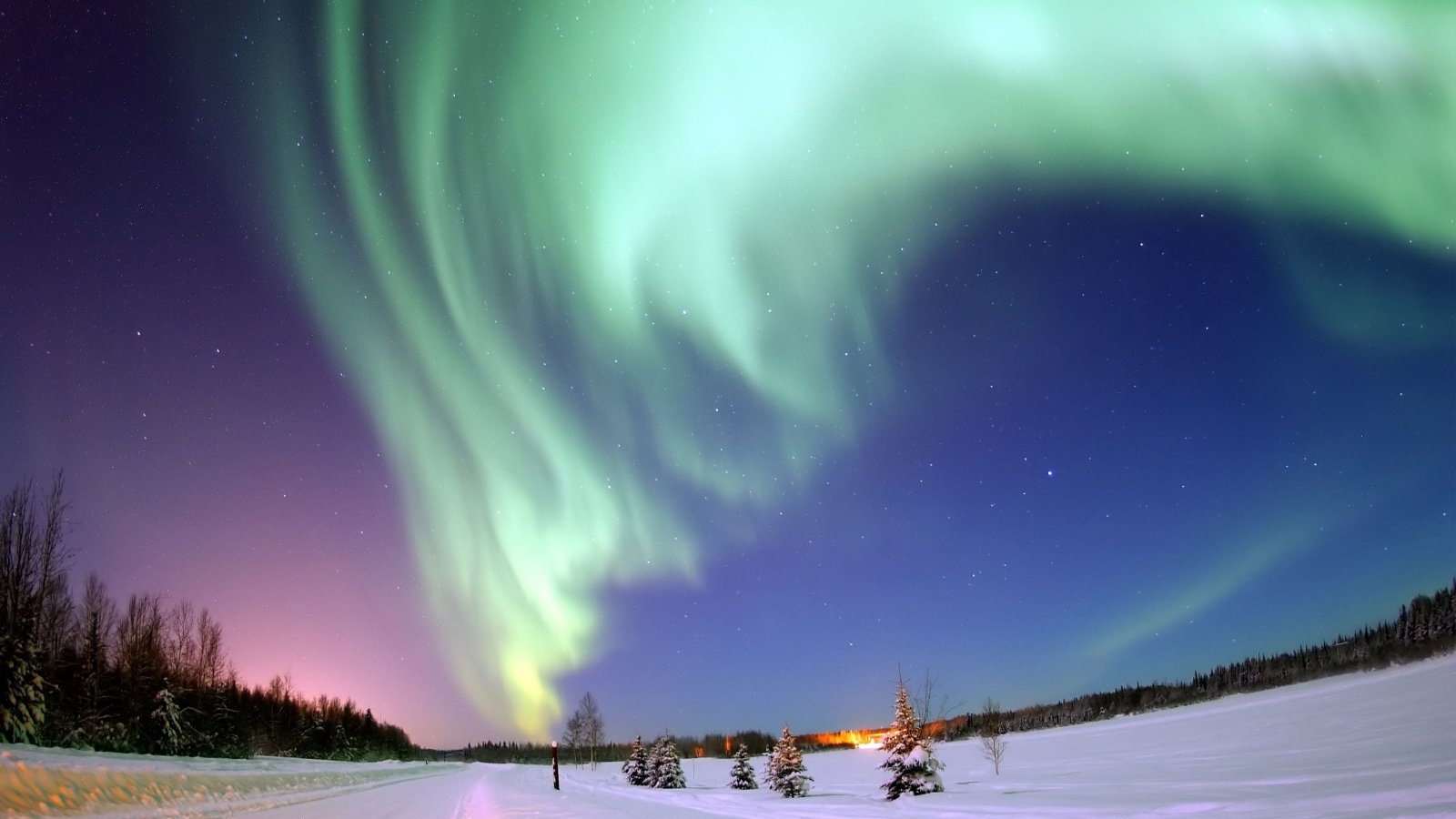
Eielson AFB is located southeast of Fairbanks and exists almost entirely to support military personnel and operations. It’s not a typical town—most housing is government-owned or tied to military service, and civilian options are extremely limited. If you’re not connected to the base, there’s very little reason to move here.
The surrounding area has few amenities, and the winters can be brutally cold. For first-time buyers, there’s little to no support, no public transit, and no walkable infrastructure. It’s a location built for a specific purpose—not for long-term civilian homeownership.
Eielson Air Force Base – FTBS 0.00
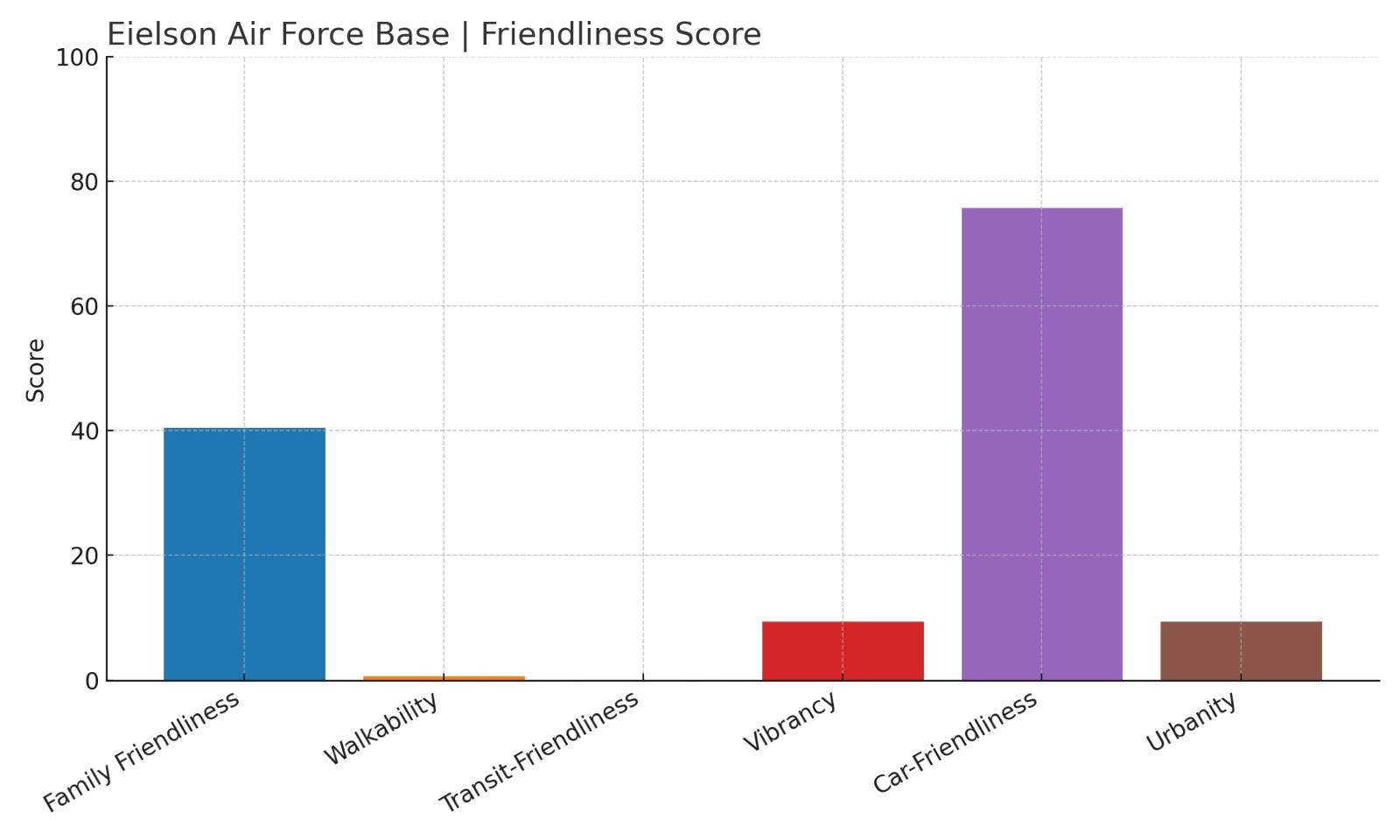
- Overall First Time Buyer Friendliness Score: 0.00
- Family Friendliness: 40.33
- Walkability: 0.57
- Transit-Friendliness: 0.00
- Vibrancy: 9.25
- Car-Friendliness: 75.57
- Urbanity: 9.32
Eielson’s FTBS score of 0.00 reflects how unsuitable the area is for first-time buyers. Unless you’re affiliated with the military, there’s no realistic pathway to homeownership here—and no infrastructure to help you get started.
3. Unalaska – Remote, Expensive, and Hard to Break Into

Unalaska, home to the port of Dutch Harbor, is one of Alaska’s busiest commercial hubs—at least for seafood. It plays a major role in the fishing industry, but despite the economic activity, it remains extremely hard to access and even harder to afford. With no roads to the mainland, everything is flown or shipped in, driving up costs across the board.
There’s little in the way of affordable housing, and most units are tied to employers or seasonal work. For new buyers, especially those without job connections or local knowledge, Unalaska can feel impenetrable. It’s a working port—not a welcoming place for someone trying to settle down for the first time.
Unalaska – FTBS 0.00
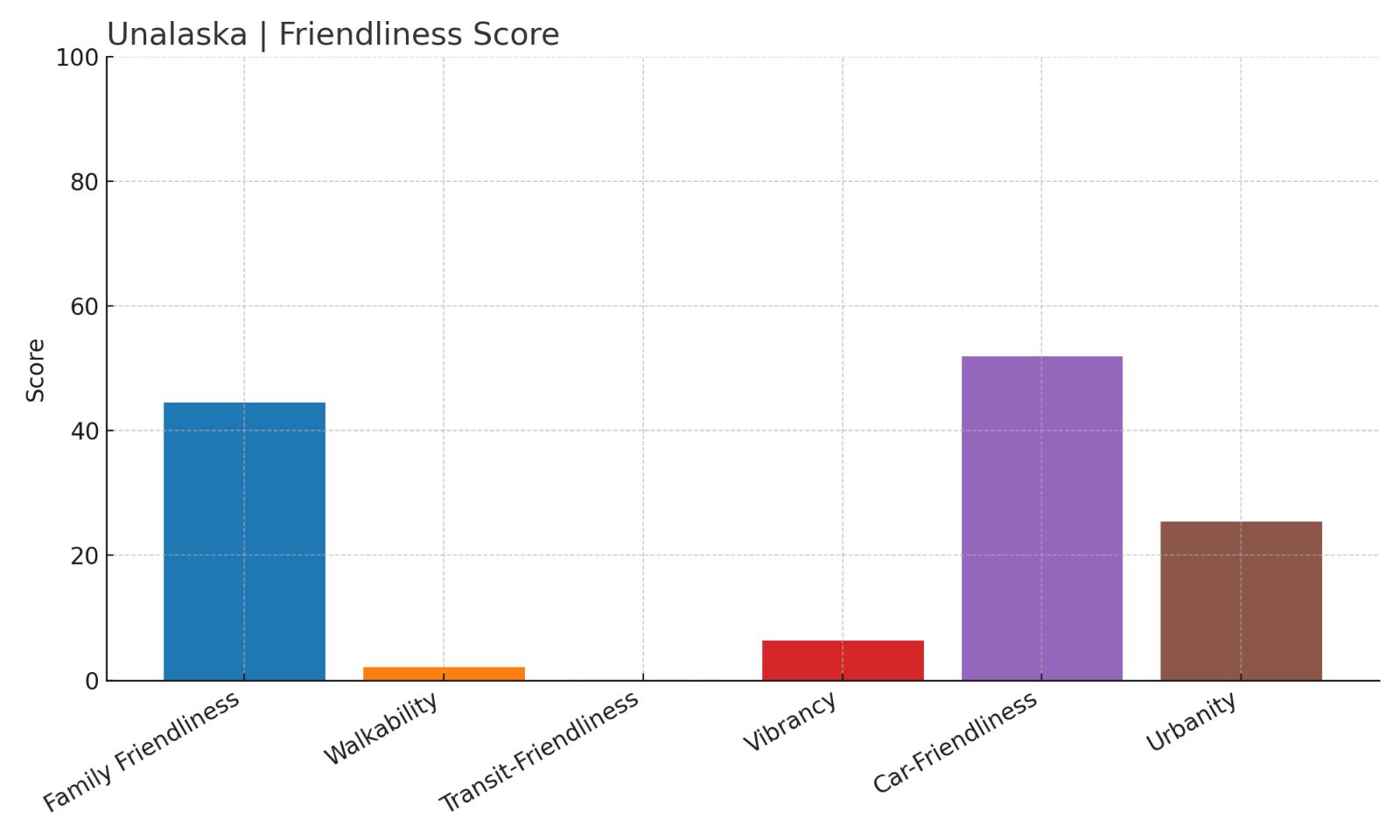
- Overall First Time Buyer Friendliness Score: 0.00
- Family Friendliness: 44.41
- Walkability: 2.01
- Transit-Friendliness: 0.00
- Vibrancy: 6.27
- Car-Friendliness: 51.85
- Urbanity: 25.35
With housing stock mostly tied to employment and nearly no infrastructure for buyers, Unalaska’s FTBS score of 0.00 says it all. It might be a powerhouse for fish—but it’s no place to start your homeownership journey.
2. Hyder – Isolated Border Town With Few Services
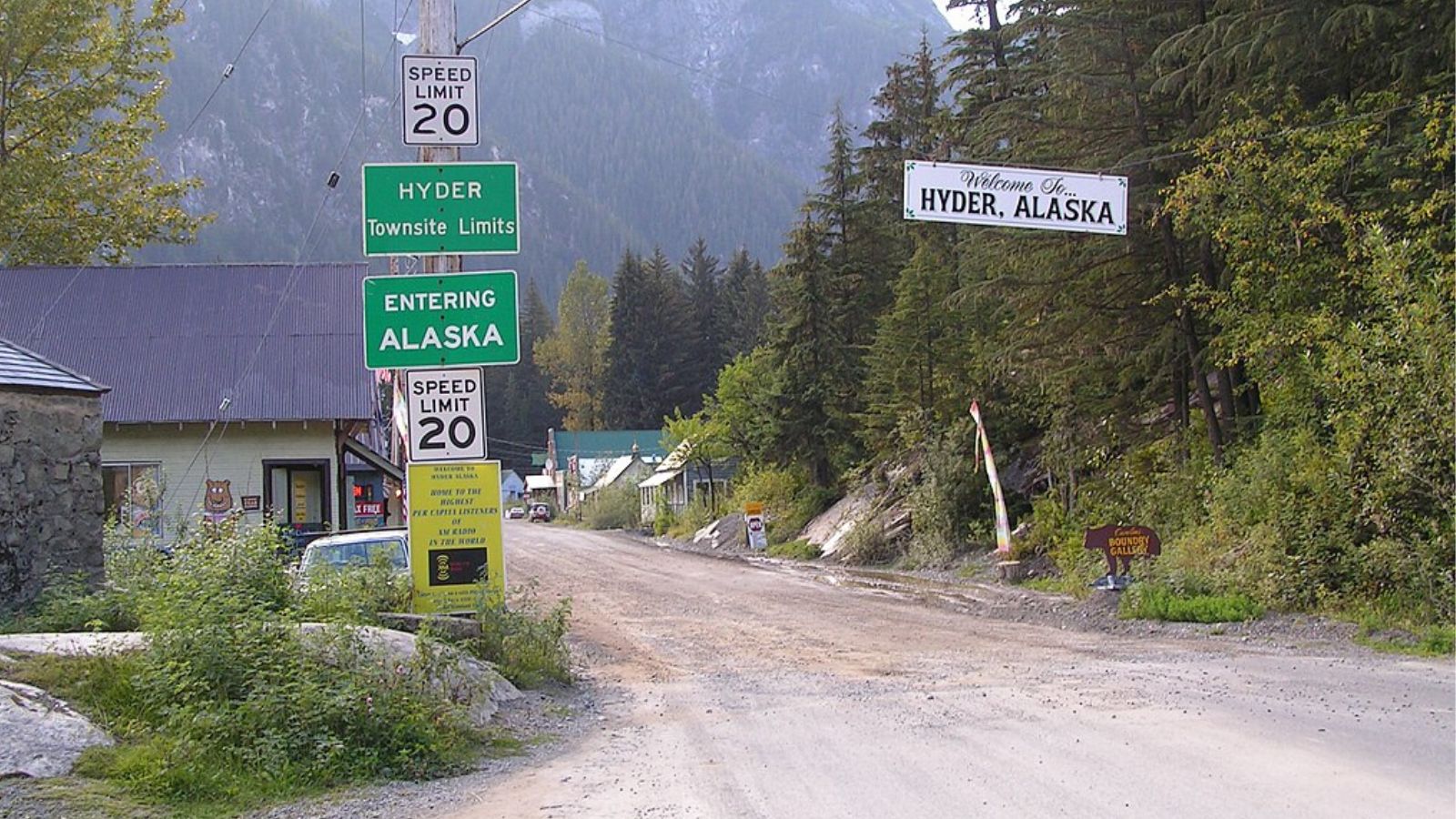
Hyder is one of Alaska’s quirkiest spots—a tiny community nestled right on the border with British Columbia. In fact, it’s more closely connected to Canada than the U.S., relying on neighboring Stewart for basic services. There are no schools, no grocery stores, and no real infrastructure to speak of on the Alaskan side.
For someone looking to buy their first home, Hyder is practically off the map. The community is small, the housing options are extremely limited, and the logistical challenges of living here full-time are significant. It may be appealing to off-grid adventurers, but not to anyone seeking long-term stability and support.
Hyder – FTBS 0.00
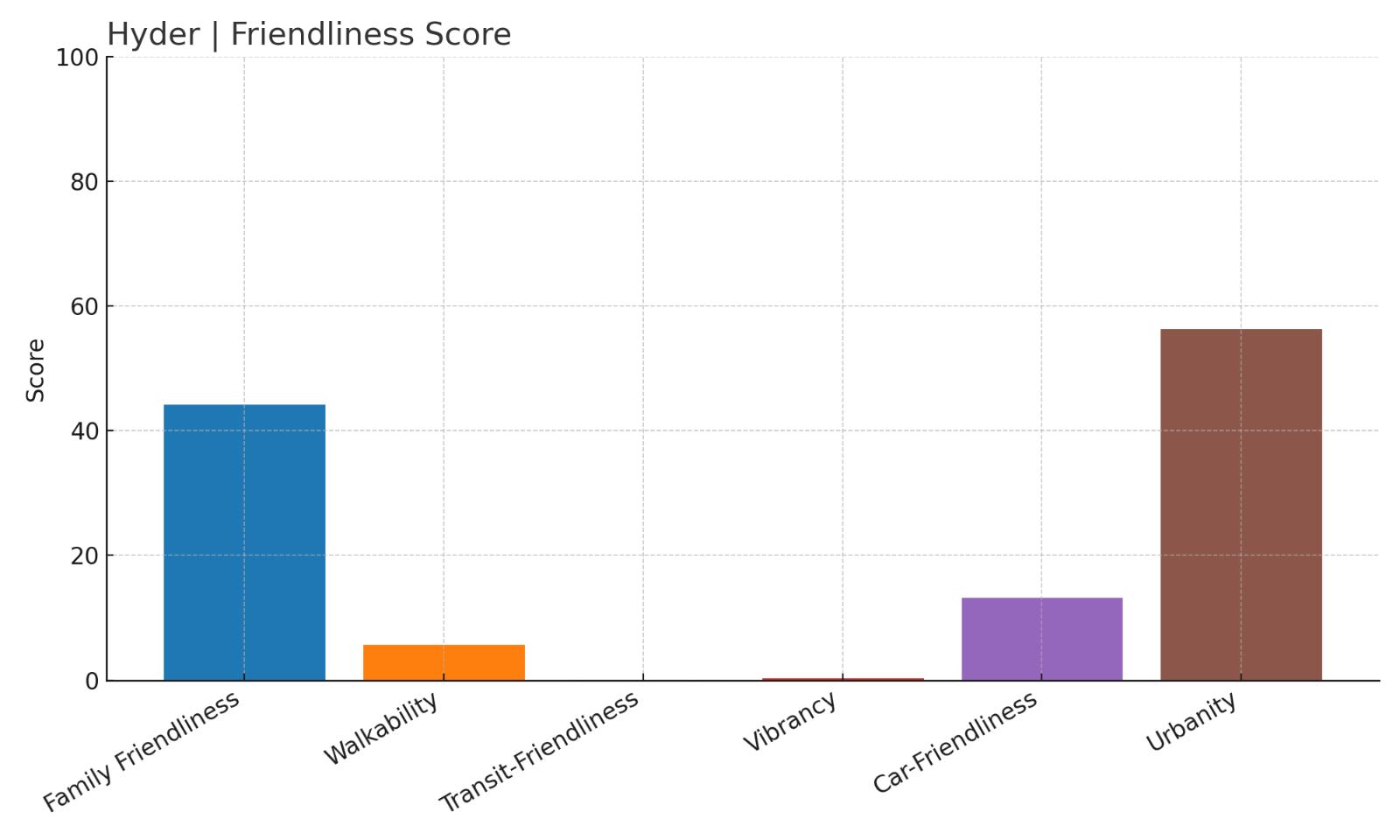
- Overall First Time Buyer Friendliness Score: 0.00
- Family Friendliness: 44.12
- Walkability: 5.60
- Transit-Friendliness: 0.00
- Vibrancy: 0.19
- Car-Friendliness: 13.14
- Urbanity: 56.15
Hyder’s FTBS of 0.00 highlights its total lack of services for newcomers. It might have novelty value, but for first-time buyers, it’s more of a curiosity than a candidate.
1. Bethel – Regional Center With Major Drawbacks

Bethel is a major hub in western Alaska, serving dozens of remote villages as a center for healthcare, shopping, and transportation. But while it’s busier than many places on this list, that doesn’t mean it’s ready to support first-time buyers. Like so many other off-road towns, everything must be flown in or barged up the river, which makes everyday life expensive and unpredictable.
The housing market is limited and costly, and while jobs in education and healthcare do exist, infrastructure remains weak. There’s little in the way of walkable development, no public transit, and the town’s layout is car-dependent despite harsh weather and high vehicle costs.
Bethel – FTBS 0.00

- Overall First Time Buyer Friendliness Score: 0.00
- Family Friendliness: 30.83
- Walkability: 0.90
- Transit-Friendliness: 0.00
- Vibrancy: 15.87
- Car-Friendliness: 39.88
- Urbanity: 23.46
Bethel may serve a large region, but it doesn’t serve first-time buyers. With no transit, no walkable neighborhoods, and extremely limited housing inventory, its FTBS score of 0.00 makes perfect sense.






